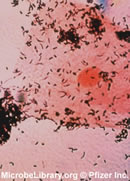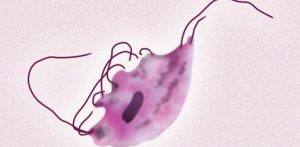Bacterial vaginosis is a condition characterized by discharge or vaginal discharge odor in the absence of other symptoms such as local irritation or itching. Not considered as a sexually transmitted infection because the origin is a change in the normal vaginal bacterial flora due to different mechanisms that the name later. In a nutshell, there is a substitution of the "good" bacteria that live in the vagina by other "bad" which, even though they also live there, are kept at Bay. The good bacteria, particularly BACILLUS DODERLEIN, maintain vaginal acid to establishing an excellent protective barrier against other germs such as GARDNERELLA VAGINALIS and other agents that are capable of producing a bacterial vaginosis. The role played by sexual activity in the emergence of the VB is not clear. Women do not get bacterial vaginosis by contact with toilets, bedding, swimming pools or by touching objects that surround them. Women who have never had sexual relations can also suffer from this infection.
What are the symptoms of vaginosis?
The majority of women do not have symptoms; However, about 50% of the women concerned a foul-smelling vaginal discharge which has described as "smell fishy" that worsens after sexual intercourse or the menstrual period when vaginal pH becomes less acid. There is no irritation or itching. Stained clothing amarrillento intimate
How is it diagnosed?
There is no particular evidence to make the diagnosis. During the Gynecologic evaluation can be evidence vaginal discharge which can be seen at the bottom of the vagina and that looks like gray sparkling non-irritating and with the characteristic smell. To bring out the particular stench of Vaginosis a couple of drops of potassium hydroxide (KOH) are added to a sample of flow and immediately there is a strong smell fishy. If you have a microscope you can see the preparation in search of certain characteristics that define the Gardnerella
What treatment is needed?
The treatment is very simple and involves antibiotics orally or vaginally.
There are schemes in a single dose or for 7 to 10 days with similar effectiveness in all cases. Treatment of sexual partner is required. If the flow is abundant and feel uncomfortable to the patient I personally use Vaginal Douches with YOGURT diluted a couple of days to make the patient feel cleaner while treatment takes effect. The reason? The bacteria that produce yoghurt are similar to those normally found in the vagina and produce acid
What can I do
- Follow the directions of your doctor.
- Annually visit your gynecologist.
- Inform your gynaecologist about the current or recent use of medications, especially antibiotics.
- Inform your doctor if you are pregnant. It has engaged to bacterial vaginosis as a trigger mechanism for preterm birth.
What should I do
- DOUCHING is not practiced: this has been ruled out of modern Gynecology since it induces a change in the normal vaginal flora promoting the development of the bacteria that could cause bacterial vaginosis.
- Do not drink alcohol during treatment: most of the medications used to treat vaginosis has effects with alcohol, very unpleasant effects characterized by facial flushing, headache, dizziness, etc.
- Don't fight with your partner: this is not a sexually transmitted disease, it is just a local change.
Recovery time
Cure is obtained in more than 90% of cases, the treatment is repeated if necessary. Vaginosis can appear and it is necessary to treat it again. The cure is based on the Elimination of foul-smelling vaginal discharge.
What can you do so that does not happen again?
- Do not practice showers or vaginal washes, these do not have any raison d ' être and is considered a poor practice in the woman.
- Do not treat yourself with antibiotics.
- Use cotton intimate apparel.
- Does not maintain vaginal relations after having them Annals since the vagina is contaminated with fecal bacteria.
- When evacuate, make your toilet from front to back.
Cause and effect

Gardnerella vaginalis in cool microscope: cervical cell surrounded by bacteria in the form of sticks.
Whenever you have a vaginosis is important to rule out a trichomoniasis, an infection caused by Trichomonas vaginalis which behaves as a sexually transmitted agent.
